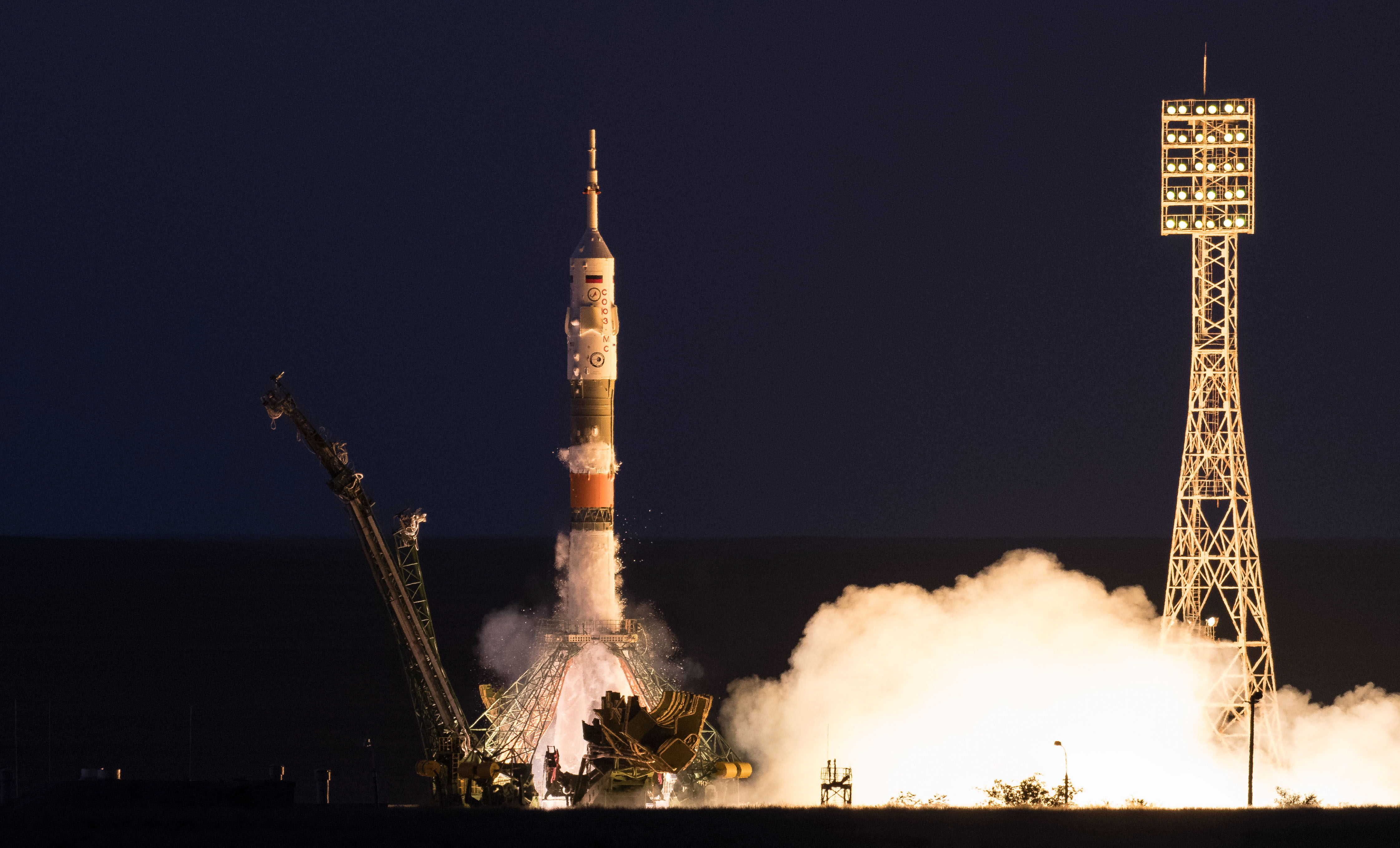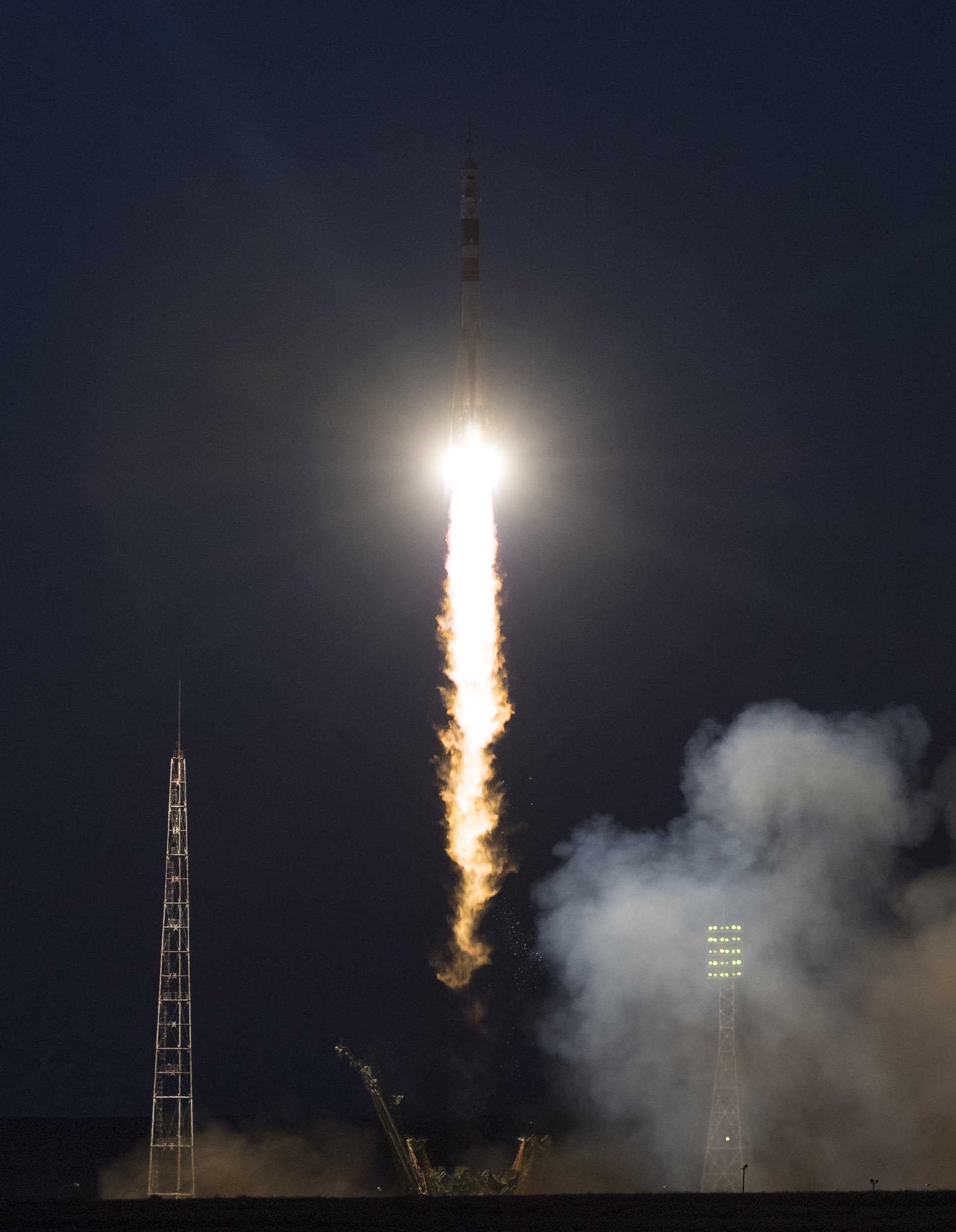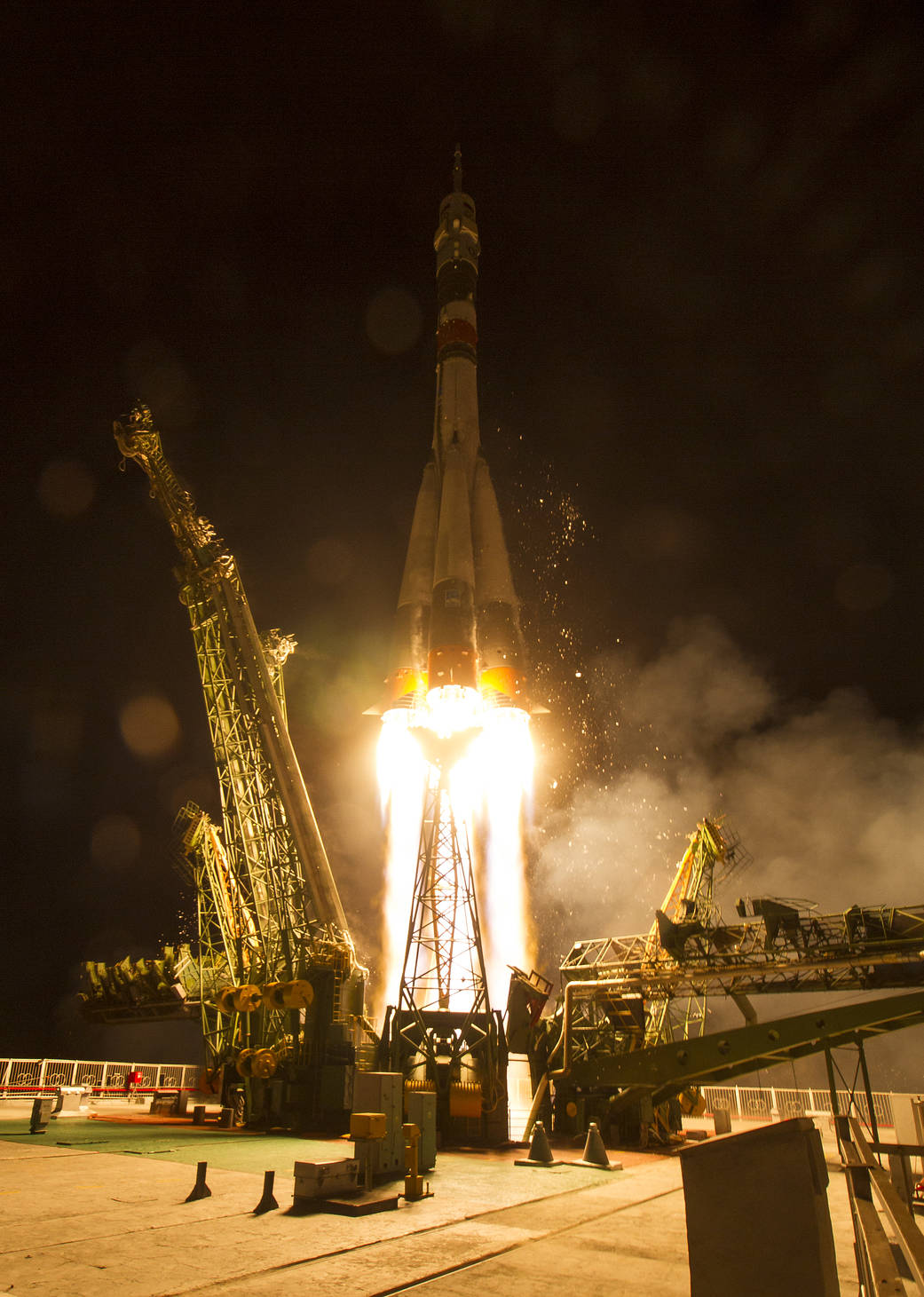Veteran Multinational Trio Launches on Soyuz and Arrives at International Space Station

The Soyuz MS-05 rocket is launched with Expedition 52 flight engineer Sergei Ryazanskiy of Roscosmos, flight engineer Randy Bresnik of NASA, and flight engineer Paolo Nespoli of ESA (European Space Agency), Friday, July 28, 2017 at the Baikonur Cosmodrome in Kazakhstan. Photo Credit: (NASA/Joel Kowsky)
An all veteran multinational trio of astronauts and cosmonauts rocketed to orbit aboard a Russian Soyuz capsule and safely arrived at the International Space Station (ISS) after a fast track rendezvous on Friday, July 28.
NASA astronaut Randy Bresnik, Sergey Ryazanskiy of Roscosmos and Paolo Nespoli of ESA (European Space Agency) docked at the orbital outpost at 5:54 p.m. EDT (2154 GMT) Friday just six hours after departing our Home Planet.
The three crewmates launched aboard the Russian Soyuz MS-05 spacecraft from the Baikonur Cosmodrome in Kazakhstan during a typically hot mid-summers night at 9:41 p.m. Baikonur time, or 11:41 a.m. EDT.
The entire launch sequence aboard the Soyuz rocket performed flawlessly and delivered the Soyuz capsule to its targeted preliminary orbit flowing by the planned opening of the vehicles solar arrays and antennas.

The Russian Soyuz MS-05 carrying NASA astronaut Randy Bresnik, Sergey Ryazanskiy of the Russian space agency Roscosmos, and Paolo Nespoli of ESA (European Space Agency) docked to the International Space Station at 5:54 p.m. on Friday, July 28, 2017. Credits: NASA Television
Following a rapid series of orbit raising maneuvers, the Soyuz reached the ISS after 4 orbits and six hours to successfully complete all the rendezvous and docking procedures.
The Soyuz docked at the Earth-facing Russian Rassvet module as the spaceships were flying some 250 mi (400 km) over Germany.

The Soyuz MS-05 rocket is launched with Expedition 52 flight engineer Sergei Ryazanskiy of Roscosmos, flight engineer Randy Bresnik of NASA, and flight engineer Paolo Nespoli of ESA (European Space Agency), Friday, July 28, 2017 at the Baikonur Cosmodrome in Kazakhstan. Photo Credit: (NASA/Joel Kowsky)
Following the standard pressurization and leak checks, the hatches between the spacecraft and station were opened from inside the ISS at about 9:45 p.m. EDT.
The new trio of Bresnik, Ryazanskiy and Nespoli then floated one by one from the Soyuz into the station and restored the outpost to a full strength crew of six humans.
The veteran space flyers join Commander Fyodor Yurchikhin of Roscosmos and Flight Engineers Peggy Whitson and Jack Fischer of NASA who are already serving aboard.
Thus begins Expedition 52 aboard the million pound orbiting science complex.

The Soyuz MS-05 rocket is launched with Expedition 52 flight engineer Sergei Ryazanskiy of Roscosmos, flight engineer Randy Bresnik of NASA, and flight engineer Paolo Nespoli of ESA (European Space Agency), Friday, July 28, 2017 at the Baikonur Cosmodrome in Kazakhstan. Photo Credit: (NASA/Joel Kowsky)
This is the second space flight for both Bresnik and Ryazanskiy and the third for Nespoli.
The new Expedition 52 crew will spend a four and a half month stint aboard the station and continue over 250 ongoing science investigations in fields such as biology, Earth science, human research, physical sciences and technology development.
Bresnik, Ryazanskiy and Nespoli are slated to stay aboard until returning to Earth in December.
Whitson, Fischer and Yurchikhin are in the home stretch of their mission and will retun to Earth in September. Shortly after their departure, NASA astronauts Mark Vande Hei and Joseph Acaba and Russian cosmonaut Alexander Misurkin will launch on the next Soyuz from Kazakhstan to join the Expedition 53 crew.
Whitson is the most experienced US astronaut with time in space. Her record setting cumulative time in space will exceed 600 days and include a 9 month stay on this flight upon her return to Earth.
The newly-expanded Expedition 52 crew expect to welcome a pair of unmanned US cargo ships carrying new research experiments and supplies, namely the SpaceX Dragon as soon as August and Orbital ATK Cygnus a month or two later, on NASA-contracted commercial resupply missions.
The SpaceX CRS-12 mission will carry investigations ”the crew will work on including a study developed by the Michael J. Fox Foundation of the pathology of Parkinson’s disease to aid in the development of therapies for patients on Earth. The crew will use the special nature of microgravity in a new lung tissue study to advance understanding of how stem cells work and pave the way for further use of the microgravity environment in stem cell research. Expedition astronauts also will assemble and deploy a microsatellite investigation seeking to validate the concept of using microsatellites in low-Earth orbit to support critical operations, such as providing lower-cost Earth imagery in time-sensitive situations such as tracking severe weather and detecting natural disasters.”
Watch for Ken’s onsite space mission reports direct from the Kennedy Space Center and Cape Canaveral Air Force Station, Florida.
Stay tuned here for Ken’s continuing Earth and Planetary science and human spaceflight news.
The post Veteran Multinational Trio Launches on Soyuz and Arrives at International Space Station appeared first on Universe Today.